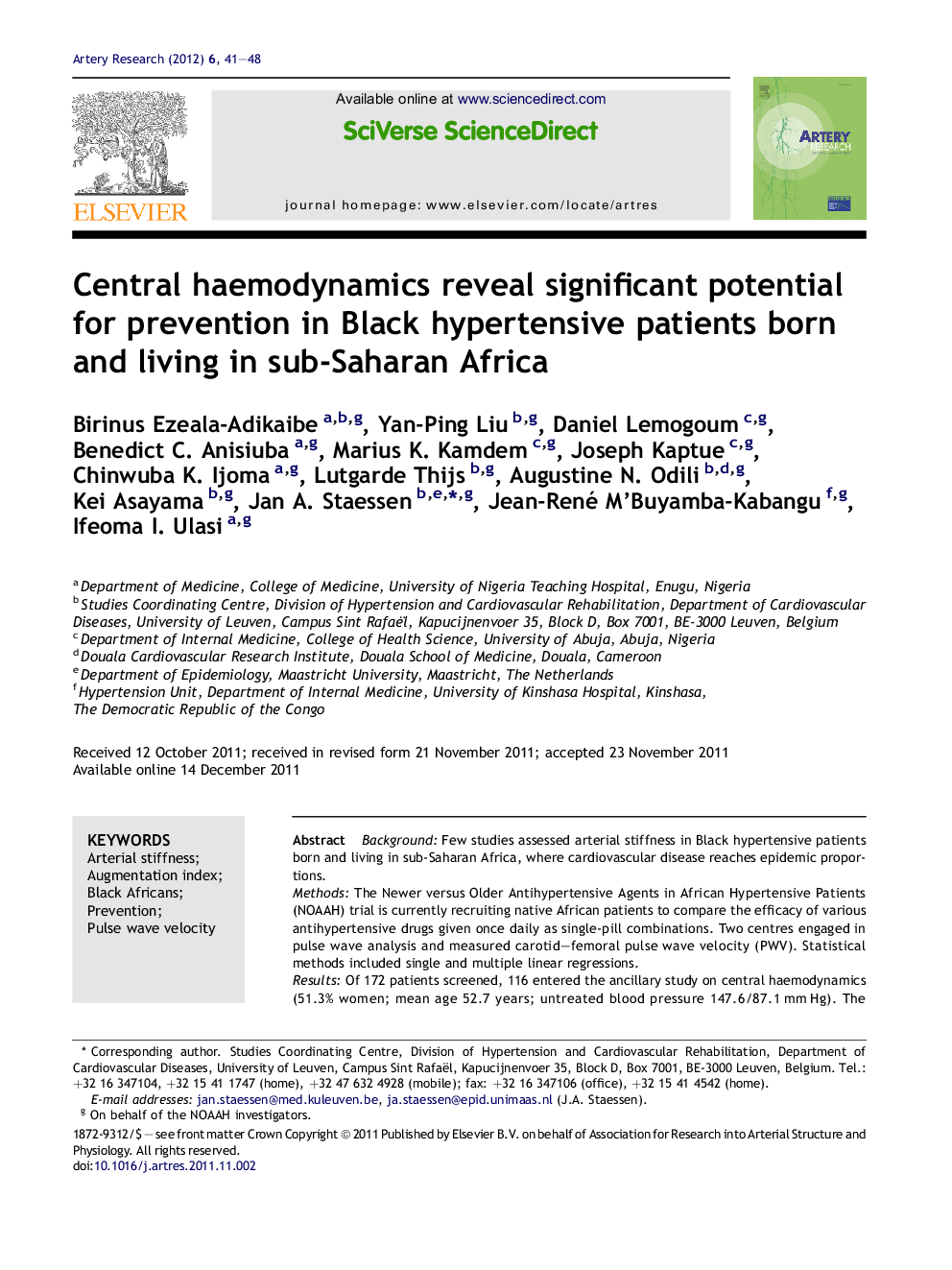| Article ID | Journal | Published Year | Pages | File Type |
|---|---|---|---|---|
| 2892072 | Artery Research | 2012 | 8 Pages |
BackgroundFew studies assessed arterial stiffness in Black hypertensive patients born and living in sub-Saharan Africa, where cardiovascular disease reaches epidemic proportions.MethodsThe Newer versus Older Antihypertensive Agents in African Hypertensive Patients (NOAAH) trial is currently recruiting native African patients to compare the efficacy of various antihypertensive drugs given once daily as single-pill combinations. Two centres engaged in pulse wave analysis and measured carotid–femoral pulse wave velocity (PWV). Statistical methods included single and multiple linear regressions.ResultsOf 172 patients screened, 116 entered the ancillary study on central haemodynamics (51.3% women; mean age 52.7 years; untreated blood pressure 147.6/87.1 mm Hg). The augmentation indexes were higher (p < 0.0001) in women than men, both peripherally (pAI, 11.1 vs. −10.6%) and centrally (cAI, 39.0 vs. 28.0%). PWV (8.91 m/s) and central pulse pressure (cPP, 48.7 mm Hg) were similar (p > 0.844) in both sexes. pAI and cAI increased with female sex and mean arterial pressure, but decreased with heart rate and body mass index. cPP increased with age and mean arterial pressure. PWV increased with age and mean arterial pressure. Patients with measurements above the age-specific thresholds determined in healthy Black South Africans amounted to 0 for cAI, 1 (1.2%) for cPP, and 11 (18.3%) for PWV.ConclusionNOAAH patients have measures of arterial stiffness similar to those of a healthy Black reference population with determinants as reported in the literature. Our observations highlight the potential for the prevention of irreversible arterial damage by timely treating sub-Saharan hypertensive patients to target blood pressure levels.
